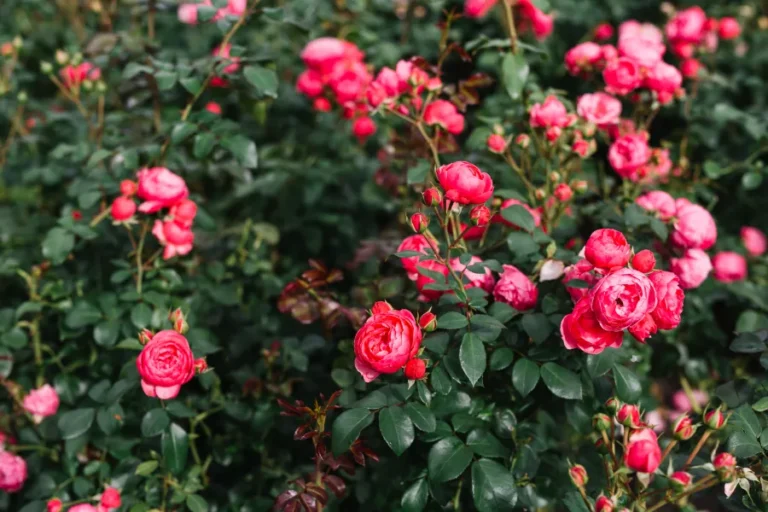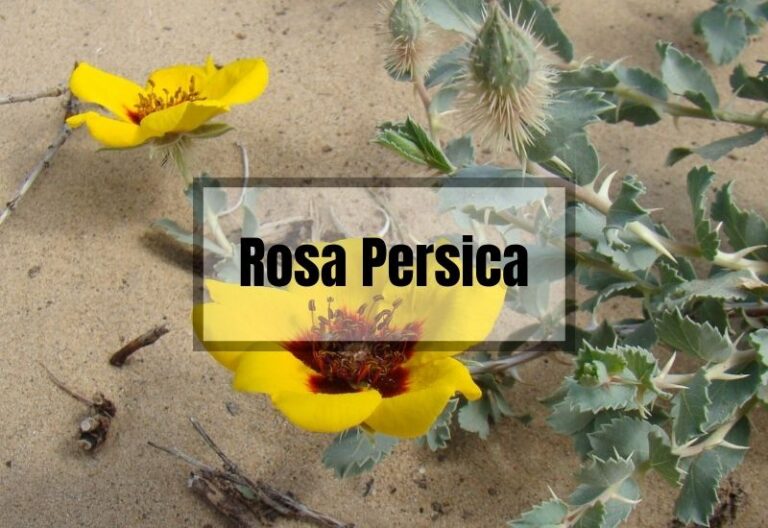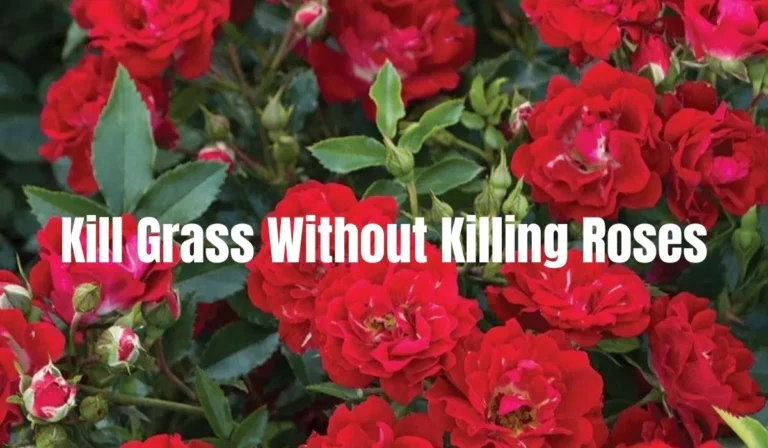Gertrude Jekyll Rose Problems: Your Quick Fix Guide
Do you have a Gertrude Jekyll rose in your garden? If so, you may encounter some problems that can affect its health and beauty. Gertrude Jekyll roses are known for their stunning pink blooms and strong fragrance, but they can also fall victim to diseases, pests, and environmental factors.
Knowing how to identify and prevent these problems can help you keep your Gertrude Jekyll rose healthy and thriving.
Identifying common problems is the first step in providing the best care for your Gertrude Jekyll rose. Diseases such as black spot, powdery mildew, and rust can cause leaves to yellow and drop prematurely, while pests like aphids, spider mites, and thrips can damage leaves and buds.
Environmental factors like extreme heat or cold, drought, and poor soil can also affect the growth and health of your rose. Understanding these problems and their causes can help you take preventive measures to keep your Gertrude Jekyll rose healthy and beautiful.
Key Takeaways
- Gertrude Jekyll roses can be affected by diseases, pests, and environmental factors.
- Identifying common problems is the first step in providing the best care for your rose.
- Preventive measures and treatment options can help keep your Gertrude Jekyll rose healthy and thriving.
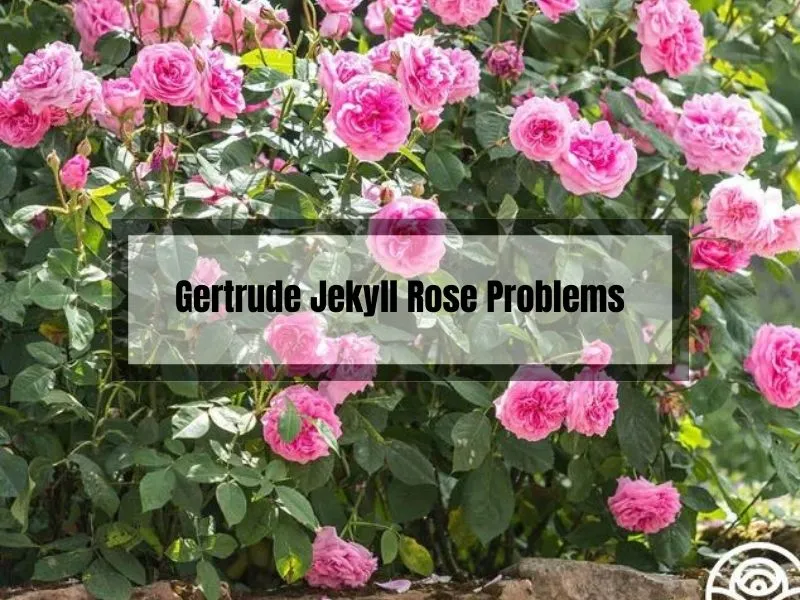
Common Gertrude Jekyll Rose Problems
There are a few common issues that can affect Gertrude Jekyll roses, such as diseases, pests, and environmental factors. Understanding these problems is essential to providing the best care for these beautiful plants.
So, let’s take a closer look at each category.
Diseases
Roses can be prone to several diseases, but with a little knowledge and proactive care, we can keep them at bay. Here are some of the most common diseases affecting Gertrude Jekyll roses:
1. Blackspot
- Symptoms: Black spots on leaves, followed by yellowing and leaf drop
- Causes: A fungus called Diplocarpon rosae
- Prevention: Ensure proper air circulation, water at the base of the plant, and remove infected leaves promptly
2. Powdery Mildew
- Symptoms: White powdery coating on leaves and buds
- Causes: A group of fungi called Erysiphales
- Prevention: Provide proper air circulation, avoid overcrowding, and water early in the day
3. Rust
- Symptoms: Orange or rust-colored spots on the underside of leaves
- Causes: Fungi from the genus Phragmidium
- Prevention: Maintain proper air circulation, avoid wetting leaves when watering, and remove infected leaves
4. Botrytis Blight
- Symptoms: Brown spots on petals and buds, gray mold on affected areas
- Causes: A fungus called Botrytis cinerea
- Prevention: Prune off affected blooms, avoid excessive moisture, and provide adequate air circulation
Pests
No one likes uninvited guests, especially when they’re munching on our beloved roses. Here are some common pests that can affect Gertrude Jekyll roses:
- Aphids
- Symptoms: Small green or black insects clustered on new growth, causing curling or yellowing of leaves
- Causes: Several species of aphids
- Prevention: Encourage beneficial insects, use insecticidal soap, or blast them off with a stream of water
- Japanese Beetles
- Symptoms: Skeletonized leaves and damaged flowers
- Causes: Adult Japanese beetles (Popillia japonica)
- Prevention: Handpick and drown in soapy water or use insecticidal products
- Spider Mites
- Symptoms: Fine webbing on leaves, yellowing, and leaf drop
- Causes: Tiny spider-like pests, especially the two-spotted spider mite (Tetranychus urticae)
- Prevention: Keep plants well-watered, release predatory mites, or use miticides
- Rose Slugs
- Symptoms: Small, irregular holes in leaves
- Causes: Larvae of the sawfly (Endelomyia aethiops)
- Prevention: Handpick larvae, use insecticidal soap, or encourage beneficial insects
Environmental Factors
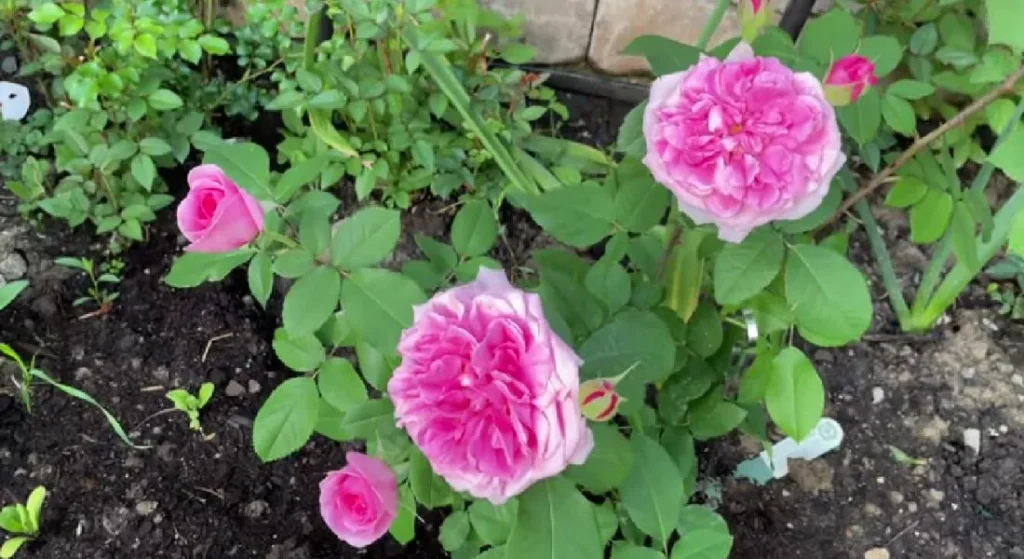
Even the most dedicated gardeners can’t control the weather, but we can still adapt to environmental factors that may impact our Gertrude Jekyll roses:
- Poor Drainage
- Consequences: Root rot, fungal diseases, and overall plant stress
- Solutions: Plant roses in well-draining soil, amend soil with organic matter, or consider raised beds for better drainage
- Insufficient Sunlight
- Importance: Proper sun exposure is essential for healthy growth, flowering, and disease resistance
- Tips: Plant Gertrude Jekyll roses in a location that receives at least 6 hours of direct sunlight daily
- Overcrowding
- Risks: Poor air circulation, increased susceptibility to diseases and pests
- Recommendations: Space Gertrude Jekyll roses at least 3 to 4 feet apart to allow for adequate air circulation and growth
Effective Cultural Practices for a Healthy Gertrude Jekyll Rose
Now that we’ve explored common problems, let’s focus on some positive actions to keep our Gertrude Jekyll roses in tip-top shape:
Proper Planting Techniques
- Dig a hole slightly larger than the root ball, ensuring the graft union is slightly above soil level
- Mix compost or other organic matter into the backfill soil
- Water the newly planted rose thoroughly and keep the soil moist but not soggy

Watering and Irrigation Tips
- Water deeply and consistently, aiming for the base of the plant to avoid wetting leaves
- Apply a layer of mulch to help conserve moisture and regulate soil temperature
Pruning and Maintenance
- Remove dead, damaged, or crossing canes during dormancy
- Prune to encourage an open, vase-like shape for better air circulation
- Clean up fallen leaves and debris to reduce the risk of disease
Fertilizing and Soil Improvement
- Use a balanced, slow-release fertilizer or organic amendments like compost or well-rotted manure
- Apply fertilizer in early spring and again in mid-summer, following package instructions
FAQs
How can I prevent diseases and pests on my Gertrude Jekyll roses?
Focus on good cultural practices like proper planting, watering, pruning, and fertilization. Encourage beneficial insects and monitor plants regularly for signs of problems.
What are the best practices for planting and caring for Gertrude Jekyll roses?
Plant in well-draining soil with ample sunlight, water consistently, prune for good air circulation, and fertilize according to package instructions.
How much sunlight do Gertrude Jekyll roses need?
Gertrude Jekyll roses need at least 6 hours of direct sunlight daily for optimal growth, flowering, and disease resistance.
What is the best way to deal with Japanese beetles on Gertrude Jekyll roses?
Handpick the beetles and drown them in soapy water, or use insecticidal products labeled for Japanese beetle control.
Can I grow Gertrude Jekyll roses in a container?
Yes, you can grow Gertrude Jekyll roses in large containers with proper drainage and good-quality potting mix. Be sure to provide enough sunlight and water, as container-grown plants may dry out more quickly.
Conclusion
Understanding and addressing Gertrude Jekyll rose problems is essential for maintaining a healthy, beautiful garden. By implementing good cultural practices, we can prevent and control these issues effectively.
So, go ahead and surround yourself with the beauty and fragrance of healthy Gertrude Jekyll roses, and let your garden be a sanctuary where you can recharge and find solace. Happy gardening, my fellow rose enthusiasts!
Related Posts:


